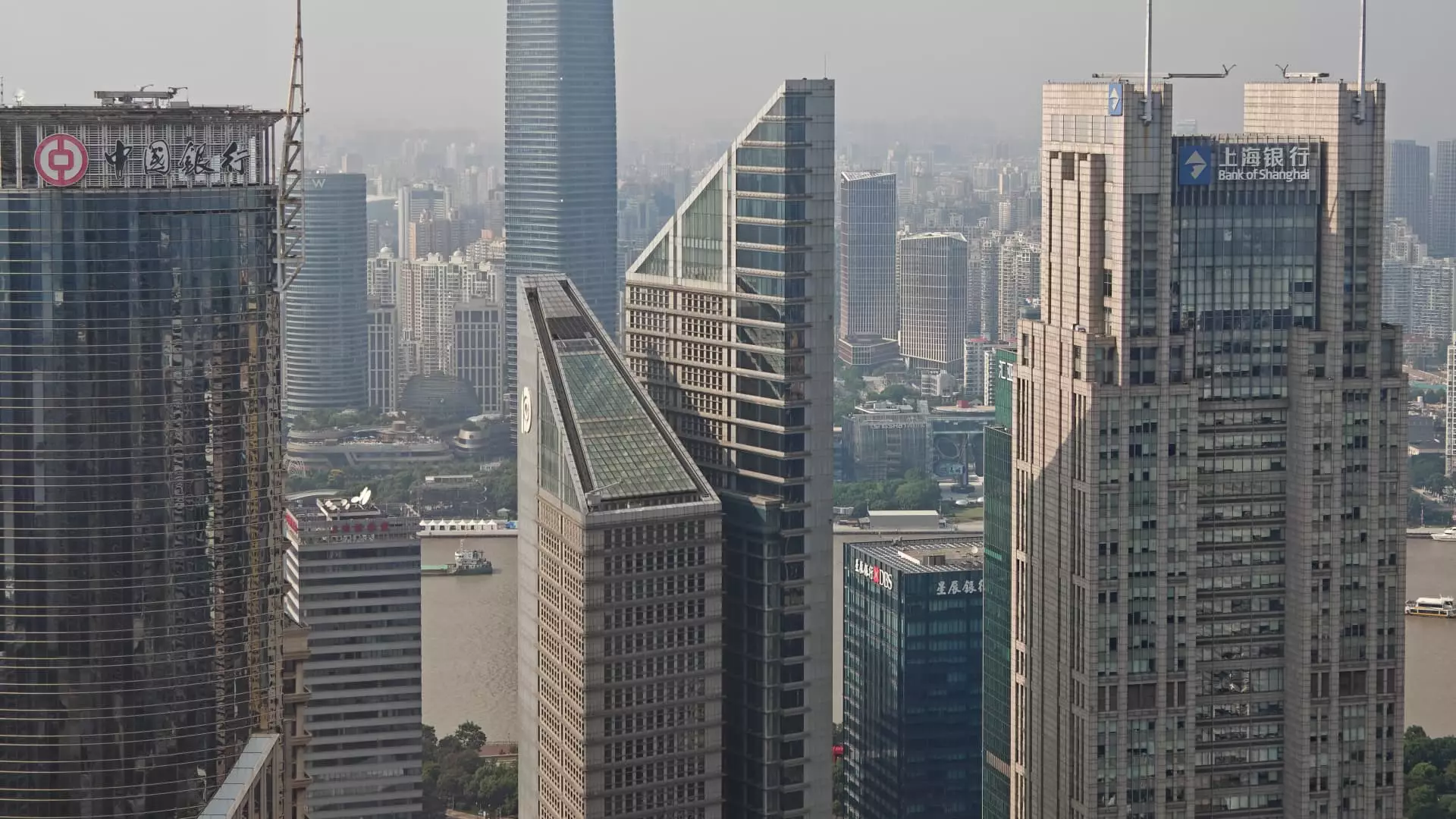China’s technology sector, long heralded as the engine of the nation’s future, now presents a fragile outlook that casts doubt on the country’s economic resilience. Despite recent modest gains in stock markets, the underlying narrative remains deeply uncertain. Analysts like Morgan Stanley’s Laura Wang warn of an impending volatility spike that could roil investor confidence in the coming months. The total picture reveals an economy that, despite some resilience, is faltering under the weight of political indecision and regulatory quagmire. Policymakers seem paralyzed, unable to catalyze growth or soothe investor nerves, setting the stage for turbulence and unpredictability. The muted response to growth challenges and the absence of decisive policy support expose fundamental vulnerabilities, making China’s market trajectory highly unpredictable.
This fragility is compounded by geopolitical and trade tensions. The looming expiration of the U.S.-China trade truce mid-August and the incoming deadline for international trade negotiations heighten the risk of disruptive shocks. The current sentiment among investors reflects cautious pessimism, especially as mainland Chinese stocks—labeled “A Shares”—continue to weaken amid ebbing confidence. While Hong Kong’s stocks, driven by global tech interests, have managed slight gains, their gains are fragile, and the broader Chinese economic prospects remain clouded by uncertainty and possible policy shocks.
Shifting Strategies: The Rise of Defensive and Income-Driven Investments
In this volatile climate, global investors are increasingly turning towards safety rather than growth. High-dividend stocks and stable financial institutions emerge as preferred havens, masking a deeper skepticism. Morgan Stanley’s recent recommendations show a tilt toward dividend yield plays such as PICC P&C, which offers a relatively attractive 4.5% yield and exposure to burgeoning auto insurance markets. The appeal is clear: dividends provide a cushion against market swings and foster a sense of security amid economic tumult. This approach echoes broader investor sentiment—favoring predictable income streams over volatile growth bets in an environment riddled with uncertainty.
Meanwhile, Chinese financial institutions and state-backed stocks continue to attract inflows due to their perceived stability. Investors prioritize sectors with perceived government backing, particularly banks and infrastructure-linked enterprises, which benefit from increased state-sponsored buying. Such preferences reflect not only a risk-averse stance but also a tacit acknowledgment of the diminished prospects for broad-based innovation-driven economic expansion. The reliance on high-yield, dividend-paying stocks underscores a fundamental shift toward safeguarding capital in the face of systemic instability.
The Divergent Paths of China’s Stock Markets
The differing performances of China’s markets illustrate the divided confidence among investors. Hong Kong’s Hang Seng Index, with its heavy weighting toward technology giants like Alibaba and Tencent, surged approximately 20% in the first half of the year. This reflects renewed optimism around Chinese AI ventures and the tech sector’s global growth potential. Conversely, Shanghai’s broader composite index managed a scant 3% rise, predominantly driven by state-owned firms and traditional industries. This gap highlights a key insight: while speculative, tech-related investments glow with promise, the broader economic foundation remains weak and risk-prone.
The Chinese consumer, heavily influenced by government policies and international perceptions, is also playing a role in shifting dynamics. Mainland investors seeking higher yields gravitate toward high-dividend stocks like PetroChina and CR Power, which offer yields exceeding 6%. Such stocks are viewed as safe harbors amid the economic storm, but this also signals a fundamental risk: the country’s ability to sustain high dividend payouts in a slowing economy is questionable. Moreover, increasing restrictions on Chinese investors’ access to U.S. and European markets further limit growth avenues, emphasizing the country’s geopolitical constraints.
Global Investor Sentiment: Divergence and Distrust
On the international front, risk appetite remains subdued when it comes to Chinese assets. Institutional investors still regard U.S. markets as the safest harbor amid global uncertainties, while seeking diversification in Europe or emerging markets when warranted. Chinese technology firms like ByteDance, which could have served as innovation anchors, remain inaccessible as they are not publicly listed, further diminishing China’s perceived attractiveness.
This situation exemplifies a broader decline in confidence. As restrictions tighten and political instability persists, China risks further capital flight and economic stagnation. Risks posed by regulatory crackdowns, geopolitical tensions, and an uncertain policy environment threaten to undermine long-term growth expectations. While Chinese government-backed initiatives continue to support certain sectors, the overall outlook appears increasingly fragile—a reality that global investors can no longer ignore. Their strategic shift towards safer, income-generating assets reflects a cautious but inevitable retreat from overly optimistic expectations and highlights a broader trend of systemic fragility that could have far-reaching implications beyond China’s borders.

